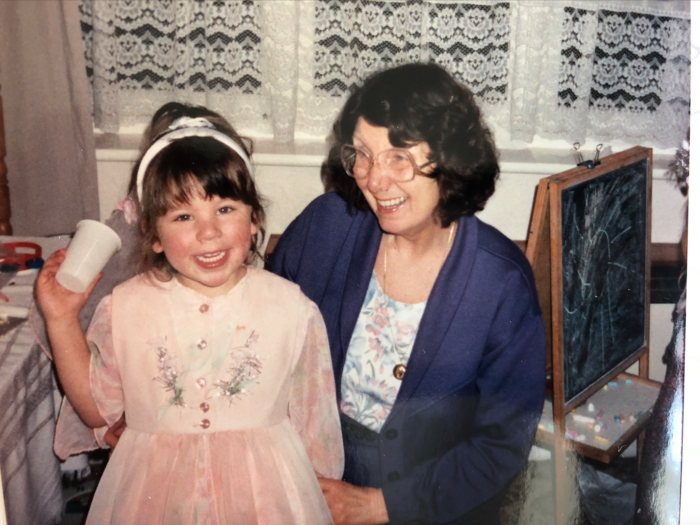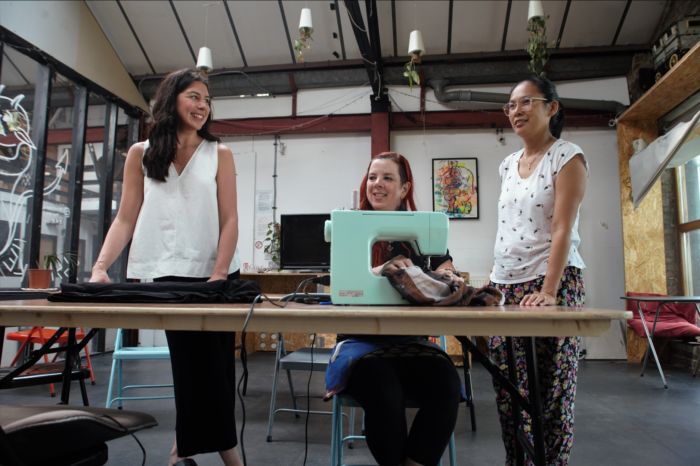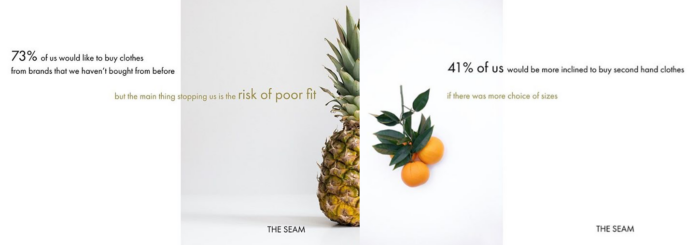The Joy of Well-fitting Clothes
Growing up I was fortunate to spend a lot of time with my grandparents. My nan is a professional seamstress and worked for many years in a high-end bridal shop in Birmingham city centre. Over the years her sewing projects at home have included making things for the neighbours, the church and everything from school uniforms to prom dresses for her grandchildren. Having clothes tailored to fit me has always been the norm and, naively, I imagined that this was the case for other people, too.

According to BodyBlock AI, 91% of consumers who order clothes online are dissatisfied with the fit and because of the lack of access to a tailor they either return items to the manufacturer or, keep them as they are and don’t wear them as frequently. As a result the average item of clothing only gets worn seven times and consumers are caught in a perpetual cycle of buying new things to try and fill the void.
When I moved to London last year, I quickly understood the reasons why so few people were wearing well-fitting clothes that made them feel good. The clothing alterations industry presented itself as two very limited and polarising worlds. On one side, there were established tailors that felt too expensive and exclusive, and contrastingly, there were dry-cleaners that felt low-budget and impersonal. There was nothing in-between and it seemed evident to me that the only way to help was to provide a people-focussed service that opposed the very nature of generic mass production.
In 2019, I founded The Seam, a marketplace that connects people who want clothes tailored, altered or reworked to people in their neighbourhood who can sew. It’s a personal service that brings the concept of made-to-measure to the masses.
According to WRAP (Waste and Resources Action Programme), extending the life of our clothes by just nine months of active use, has the potential to, reduce their carbon, water and waste footprint by around 20-30%. An example of a seemingly small change that can foster a shift towards a reality where sustainability is an integral part of a garments lifecycle. However, this change necessitates people experiencing and engaging with their clothes differently, not simply as end level consumers, but as textile custodians, with the ability to reimagine, repair and rework items, they are able to create tactile and sentimental connections with. Our wardrobes and clothes rails serve as working/functional repositories of meaning, garments interwoven with the stories of the lives lived in them.
Today, buying an item of clothing from a retail store requires such little transactional input from us that we often create, little, to no emotional attachment to our purchase. Tailoring clothes adds an important layer of individuality to the process and therefore creates a paradigm shift in the relationship we have with them. A more emotional connection creates more inclination to take better care of the things we buy and keep them for longer.
Above and beyond the element of sustainability, it pays to recognise other benefits of well tailored clothes. In the pattern cutting process, retailers work hard to achieve the perfect fit, but without an exclusively made-to-measure approach, sizing will never meet the needs of individual buyers. Standardised sizing creates an expectation of buyers to squeeze their bodies into garments that have quite literally been made to fit someone else, and in doing so can have a greatly negative impact on our wellbeing.
I asked Lily Turner, a designer in London and customer of The Seam, for her thoughts on fit. “I buy most of my trousers from Topshop because they offer a great range for tall women. I’m mostly happy with the fabric and the style of the trousers but always have to use a tailor to put some darts in the back of the waistband. Having jeans that fit me properly makes me feel more normal. I used to think that there was a problem with my body because nothing ever fit me,” she explains, “but now I realise that I just can’t rely on a retailer to provide me with the perfect fitting clothes. I have the power to do this myself and by doing so feel better in what I’m wearing. I have a lot more confidence now.”
Lily also makes an interesting point about typically buying her trousers always from the same manufacturer, I think this is something many of us can relate to. The arbitrary nature of clothing sizes in retail means that shopping for new garments requires significant time and emotional investment in order to find something that meets your requirements. It’s therefore no surprise that when consumers find something that they like, they will return to buy the same thing time and time again.
The Seam recently conducted a survey and found that 73% of consumers would like to buy from brands that they haven’t bought from before but the main reason stopping them is the associated risk of poor fit. We also found that 41% of consumers would be more inclined to buy vintage or second-hand clothing if they knew that fit wouldn’t be an issue.
The UK is seeing a significant rise in second-hand shopping, whether that’s in dedicated vintage stores, charity shops or digital marketplaces like Depop and Vestiaire Collective. I believe the general increased awareness of sustainability has a part to play in this but also the fact that these outlets now have highly-functional websites or apps where you can filter by elements such as garment size.
In a world where retailers and second hand outlets are focusing increasingly on inclusivity and sustainability, consumers can celebrate the ever increasing options available. However, it’s important to remember that the initial purchase is only the first stage of the relationship that we have with our clothes. My nan taught me that if a button falls off, then sew it back on. Or if something doesn’t fit quite right, then fix it until it does. Essentially she was teaching me to love my clothes and in time they will love me back.










